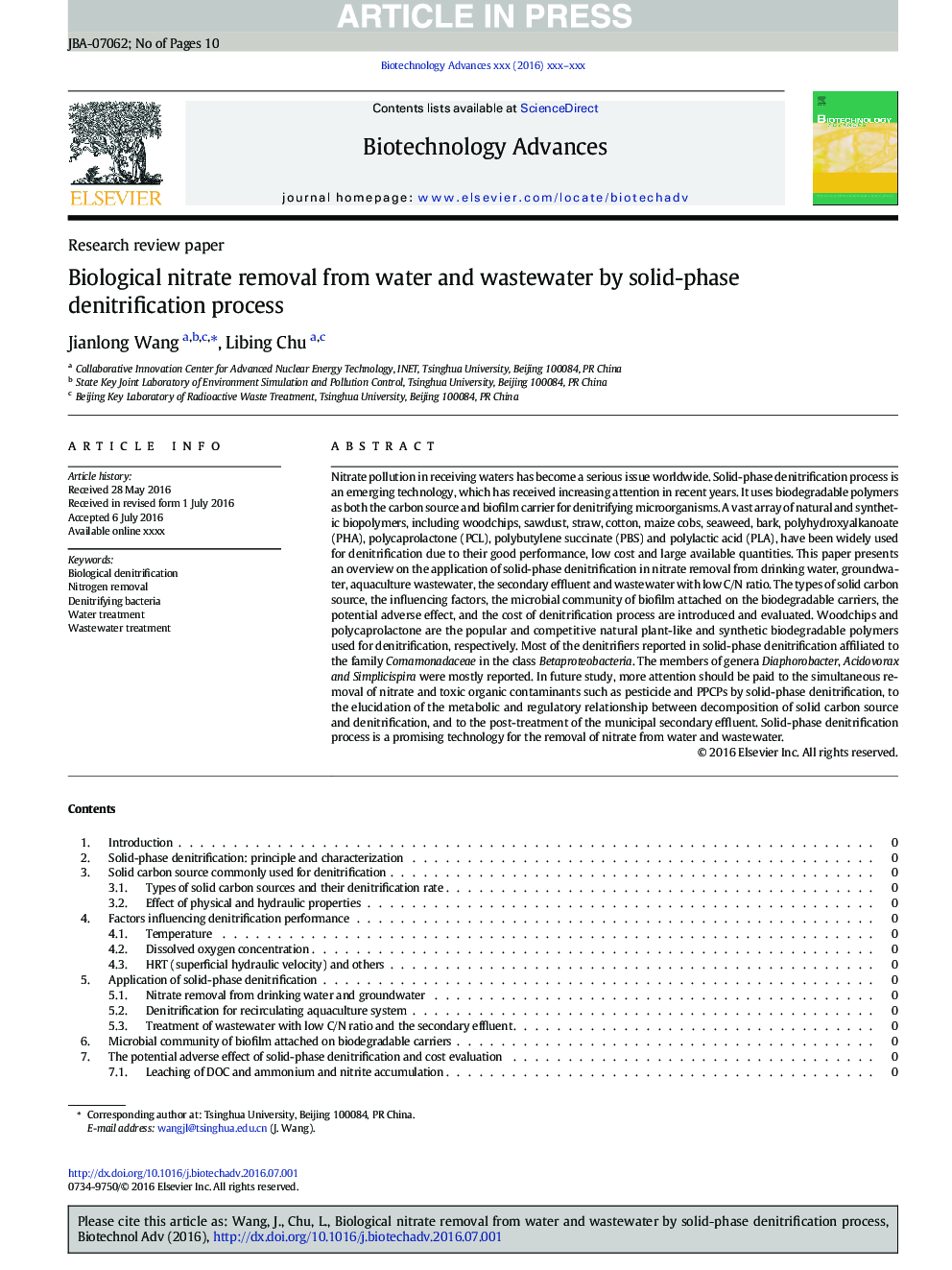| Article ID | Journal | Published Year | Pages | File Type |
|---|---|---|---|---|
| 4752562 | Biotechnology Advances | 2016 | 10 Pages |
Abstract
Nitrate pollution in receiving waters has become a serious issue worldwide. Solid-phase denitrification process is an emerging technology, which has received increasing attention in recent years. It uses biodegradable polymers as both the carbon source and biofilm carrier for denitrifying microorganisms. A vast array of natural and synthetic biopolymers, including woodchips, sawdust, straw, cotton, maize cobs, seaweed, bark, polyhydroxyalkanoate (PHA), polycaprolactone (PCL), polybutylene succinate (PBS) and polylactic acid (PLA), have been widely used for denitrification due to their good performance, low cost and large available quantities. This paper presents an overview on the application of solid-phase denitrification in nitrate removal from drinking water, groundwater, aquaculture wastewater, the secondary effluent and wastewater with low C/N ratio. The types of solid carbon source, the influencing factors, the microbial community of biofilm attached on the biodegradable carriers, the potential adverse effect, and the cost of denitrification process are introduced and evaluated. Woodchips and polycaprolactone are the popular and competitive natural plant-like and synthetic biodegradable polymers used for denitrification, respectively. Most of the denitrifiers reported in solid-phase denitrification affiliated to the family Comamonadaceae in the class Betaproteobacteria. The members of genera Diaphorobacter, Acidovorax and Simplicispira were mostly reported. In future study, more attention should be paid to the simultaneous removal of nitrate and toxic organic contaminants such as pesticide and PPCPs by solid-phase denitrification, to the elucidation of the metabolic and regulatory relationship between decomposition of solid carbon source and denitrification, and to the post-treatment of the municipal secondary effluent. Solid-phase denitrification process is a promising technology for the removal of nitrate from water and wastewater.
Keywords
Related Topics
Physical Sciences and Engineering
Chemical Engineering
Bioengineering
Authors
Jianlong Wang, Libing Chu,
